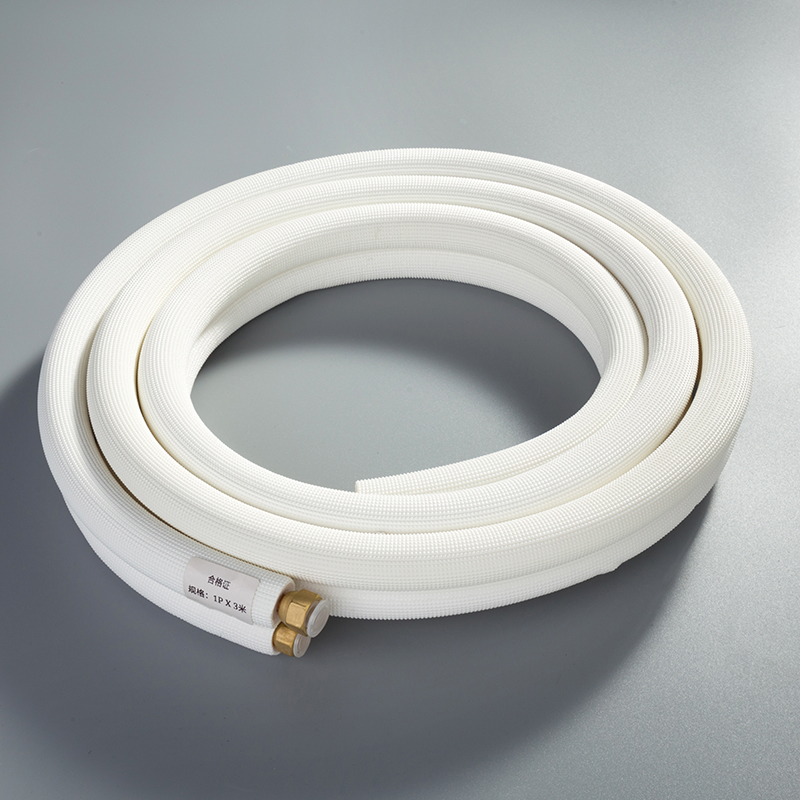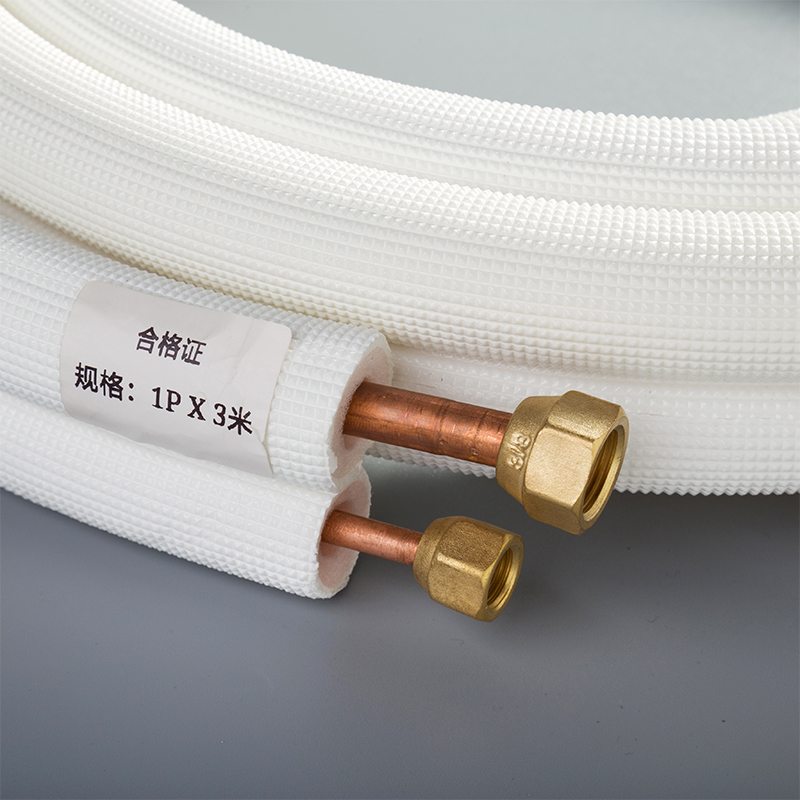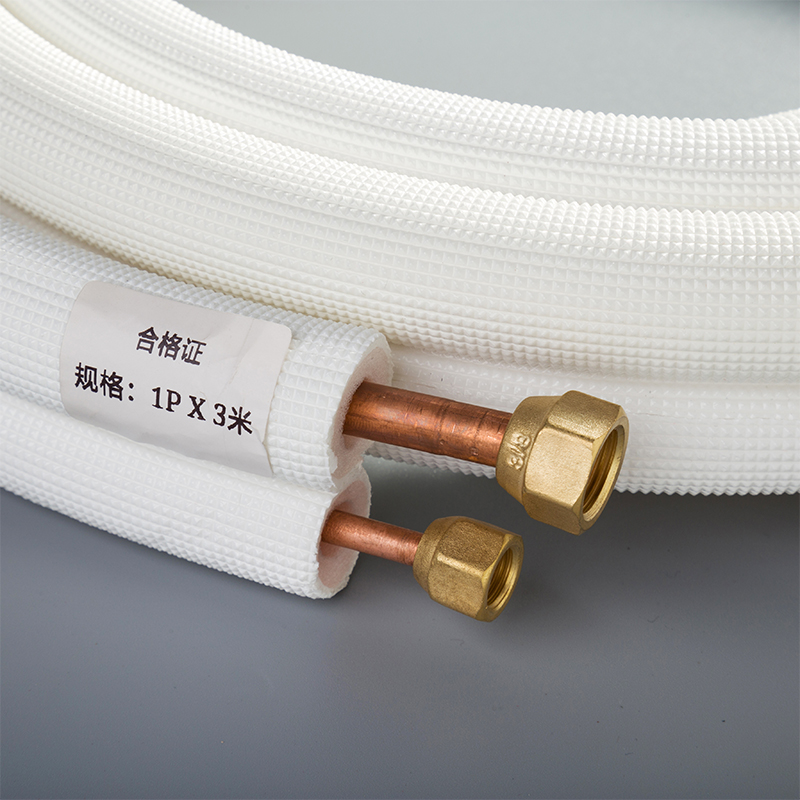Your Ultimate Guide to High-Quality Copper Pipe Fittings

Copper pipe fittings play a crucial role in plumbing systems, offering unparalleled strength, durability, and corrosion resistance. The global market for copper pipes and fittings is on the rise, with China leading in both consumption and production. These fittings are renowned for their malleability, ensuring easy installation and reliable performance even in extreme temperature changes. As experts emphasize, choosing the right copper pipe fittings is essential for an efficient and leak-free plumbing setup. Throughout this guide, we will delve into various types of copper pipe fittings, including compression, end feed, solder ring, push fit, and press fittings. Additionally, we will cover essential tools like the copper pipe cutter and the copper pipe crimping tool, as well as techniques on how to solder copper pipe effectively.
Types of Copper Pipe Fittings

Flare Fittings
Flare fittings are known for their compatibility with softer tubing materials like copper or aluminum, allowing them to be flared effectively. These fittings excel in high-pressure and high-temperature environments, providing a robust seal due to their metal-to-metal contact. When selecting flare fittings, it is crucial to consider the specific requirements of your plumbing system to ensure optimal performance.
Characteristics
Suitable for softer tubing materials such as copper or aluminum
Ideal for high-pressure and high-temperature applications
Ensures a robust seal with metal-to-metal contact
Applications
Residential Plumbing Systems: Flare fittings are commonly used in residential plumbing systems due to their reliability and durability.
HVAC Systems: These fittings are also prevalent in HVAC systems where they can withstand varying temperatures and pressures effectively.
Compression Fittings
Compression fittings offer a versatile solution when the tubing material cannot be flared, providing an alternative way to secure connections without compromising on quality. Unlike flare fittings, compression fittings do not require the tubing material to be modified before installation, making them a convenient choice for various plumbing projects.
Characteristics
Versatile solution for non-flared tubing materials
No need to modify tubing material before installation
Ensures secure connections without leaks
Applications
Water Supply Lines: Compression fittings are commonly used in water supply lines where a reliable connection is essential.
Gas Distribution Systems: These fittings are also suitable for gas distribution systems where safety and leak prevention are top priorities.
Solder Fittings
Solder fittings provide an efficient way to join copper pipes without the need for complex tools or equipment. By using lead-free silver solder or copper solder, these fittings create low-resistance joints that ensure long-lasting performance in plumbing systems. Solder fittings offer a flame-free connection method, making them a popular choice among DIY enthusiasts and professional plumbers alike.
Characteristics
Efficient method for joining copper pipes
Creates low-resistance joints for optimal performance
Flame-free connection method for convenience
Applications
Home Renovation Projects: Solder fittings are often used in home renovation projects where quick and reliable connections are required.
Commercial Plumbing Installations: These fittings find applications in commercial plumbing installations due to their durability and ease of use.
Installation Methods
How to Solder Copper Pipe
To solder copper pipe effectively, one must gather the necessary materials and follow a systematic guide. The process begins with ensuring you have a clean work area and the essential tools at hand.
Required Materials
Lead-Free Silver Solder: This type of solder is commonly used for joining copper pipes due to its low resistance properties.
Flux: Applying flux helps in cleaning and preparing the surfaces for soldering, ensuring a strong bond.
Propane Torch: A propane torch is utilized to heat the joint evenly, allowing the solder to flow smoothly.
Emery Cloth: Use emery cloth to clean the outside of the pipe and inside of the fitting, promoting better adhesion.
Safety Gear: Safety goggles and gloves are crucial to protect yourself during the soldering process.
Once you have gathered all the necessary materials, it's time to proceed with the step-by-step guide on how to solder copper pipe securely.
Step-by-Step Guide
Prepare the Pipe: Begin by cutting the copper pipe to the required length using a copper pipe cutter.
Clean Surfaces: Use emery cloth to clean both ends of the pipe and inside of fittings thoroughly.
Apply Flux: Apply flux generously on both surfaces that will be joined together.
Assemble Pipes: Fit the pieces together, ensuring they align correctly before proceeding.
Heat Joint: Use a propane torch to heat around the joint evenly until it reaches an optimal temperature for soldering.
Apply Solder: Once heated, touch the end of the solder wire to the joint, allowing it to melt and flow into place.
Cool Down: Allow sufficient time for the joint to cool down naturally without any disturbance.
Copper Pipe Crimping Tool
When utilizing a copper pipe crimping tool, it is essential to have a clear understanding of its operation and ensure you have all required tools ready for use.
Required Tools
Crimping Tool: Invest in a high-quality crimping tool that suits your project requirements for secure connections.
Copper Rings: These rings are placed over fittings before crimping and play a vital role in creating leak-proof joints.
Measuring Tape: Accurate measurements are crucial when crimping pipes; therefore, always have a measuring tape on hand.
Deburring Tool: Use this tool after cutting pipes to remove any burrs or rough edges that could affect connections.
Now let's delve into a step-by-step guide on how to effectively use a copper pipe crimping tool for your plumbing projects.
Step-by-Step Guide
Measure and Cut Pipe: Begin by measuring and cutting your copper pipe accurately using a suitable cutter.
Slide Ring Onto Pipe End: Place a copper ring over one end of the cut pipe before inserting it into a fitting.
Position Crimping Tool: Position your crimping tool over the marked spot where you need to create a connection.
Crimp Connection: Squeeze handles firmly on your crimping tool until it compresses completely around both parts.
By following these steps meticulously, you can ensure secure connections when using a copper pipe crimping tool for your plumbing needs.
Tools for Copper Pipe Fittings

Copper Pipe Cutter
When it comes to working with copper pipes, having the right tools is essential for precise cuts and smooth installations. The copper pipe cutter plays a crucial role in ensuring accurate pipe lengths without causing damage to the material. Understanding the different types of cutters available and following some usage tips can significantly improve your plumbing projects.
Types of Cutters
Standard Tube Cutter: This traditional type of cutter features a sharp cutting wheel that rotates around the pipe, gradually creating a clean cut as you rotate the tool.
Ratcheting Tube Cutter: With a ratchet mechanism, this cutter allows for easier cutting by providing more leverage and control over the cutting process.
Quick-Adjusting Tube Cutter: Ideal for quick adjustments on the job, this cutter enables you to change the cutting size rapidly without needing additional tools.
Usage Tips
Before cutting, ensure that the pipe is secured firmly in place to prevent any movement during the cutting process.
Rotate the cutter around the pipe smoothly but firmly, allowing the blade to score into the copper gradually.
Periodically check and adjust the cutting wheel's tightness to maintain a consistent cut throughout your project.
After cutting, use a deburring tool to remove any rough edges or burrs from the pipe end for a clean finish.
Press Tools
Press tools have revolutionized how professionals and DIY enthusiasts approach copper pipe fittings installations. These tools offer efficiency, reliability, and consistency when creating secure connections between pipes and fittings. Understanding the different types of press tools available and some usage tips can enhance your overall plumbing experience.
Types of Press Tools
iCrimp IWS-1632AF Press Tool: This versatile press tool comes with multiple jaws suitable for fittings of various sizes. It requires jaw replacement based on fitting sizes but offers an easy jaw replacement process.
iCrimp Hydraulic Copper Tubing Press Tool: Specifically designed for copper press fittings, this press tool differs from crimpers intended for copper crimp rings on PEX tubing systems.
iCrimp IWS-1234PS Crimping Tool: Tailored for copper crimp rings on PEX tubing, this tool provides guidance on creating copper-to-copper pipe crimp diligently, individuals can achieve a functional plumbing setup that stands the test of time. Remember, the right choice today leads to a seamless plumbing experience tomorrow.
connections using press fittings efficiently.
Usage Tips
Always refer to manufacturer guidelines when selecting compatible jaws for different fitting sizes to ensure proper connections.
Regularly inspect and maintain your press tool to guarantee optimal performance and safety during operation.
Practice using scrap pieces of piping before working on actual projects to familiarize yourself with the tool's operation.
Utilize a deburring tool after making cuts with a tube cutter to eliminate sharp edges that could affect connection integrity.
Maintenance Tips
Regular Inspection
What to Look For
Check for any signs of corrosion on the copper pipes or fittings, as this could indicate potential leaks.
Inspect the connections for any visible damage or loose fittings that may lead to water seepage.
Look out for discoloration on the pipes, which could be a sign of mineral buildup affecting water flow.
How to Address Issues
Corrosion Concerns: Use a suitable cleaning solution and a soft brush to remove corrosion carefully without damaging the pipe surface.
Damaged Connections: Tighten loose fittings using an appropriate wrench and consider replacing damaged parts promptly.
Mineral Buildup: Run vinegar through the plumbing system to dissolve mineral deposits and improve water flow.
Cleaning and Care
Recommended Cleaning Methods
Periodically flush the plumbing system with a mixture of vinegar and water to eliminate mineral deposits and maintain optimal performance.
Use a mild detergent solution to clean external surfaces of copper pipes and fittings, ensuring they remain free from dirt and grime.
Consider applying a protective coating on copper pipes to prevent oxidation and extend their lifespan.
Preventive Measures
Regular Maintenance: Schedule routine inspections to catch any issues early on and prevent major problems down the line.
Proper Storage: Store extra copper pipe fittings in a dry area away from moisture to avoid corrosion or damage.
Temperature Control: Maintain stable temperatures in areas with exposed copper pipes to prevent freezing or overheating issues.
By following these maintenance tips diligently, you can ensure the longevity and efficiency of your plumbing system while minimizing the risk of unexpected failures. Remember, proactive care is key to preserving the integrity of your copper pipe fittings for years to come.
Expert Guide emphasizes the widespread use of copper plumbing fittings in both residential and commercial buildings due to their exceptional properties. These fittings are renowned for their durability, strength, and corrosion resistance, ensuring a reliable plumbing system. Understanding the types, sizes, installation methods, and maintenance tips for copper fittings is crucial for optimal performance. By choosing high-quality fittings and following this expert guide


